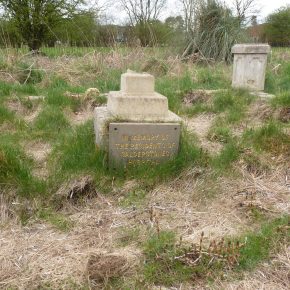Developers plan to build on the neglected burial site of 1,200 women, men and children who lived, worked and died in an institution. Nigel Ingham reports on the scandal of Calderstones
Calderstones Hospital, in the Ribble Valley, Lancashire, was a large long-stay institution for people with learning disabilities from the end of the First World War.
“We’re treated like second-class citizens,” says Daniel Doherty, a one-time resident of Calderstones.
This pithy statement relates to unfolding moves to build a private crematorium, with a car park and landscaping, on part of the site of the former institution’s graveyard. In this consecrated ground lie the remains of around 1,200 women, men and children who lived and died in Calderstones.
Calderstones – Mersey Care NHS Trust Foundation Trust Whalley site as it is now known – is now home to a low and medium-secure unit, its existence as a large long-stay NHS hospital for people with learning disabilities’ effectively ending in 2000.
At this point, most of its vast main building was demolished to make way for a housing estate and the regional health authority sold the cemetery to a private developer for a knockdown price.
Neglect and vandalism
The cemetery’s 21st century history has been largely a story of woeful neglect and vandalism. There has been wholesale removal of headstones by one of the many private owners over the years, along with a short spell of wanton destruction by local youngsters. Until recently, the site has been allowed to resemble nothing more than a wild, unkempt and overgrown field.
Yet it is the final resting place of well over 1,000 fellow citizens.
There is an added twist, as the graveyard is sited next to a Commonwealth war graves cemetery. Here are the bodies of a number of armed forces personnel who died when Calderstones was a military hospital during the two world wars. The site receives careful attention and is immaculate. This is in stark contrast to the state of the hospital cemetery, through which you have to pass to reach the military graves and memorial.

Many walk this route every November to attend the annual remembrance service. It is right and proper to remember the war dead, and to honour them with a well-looked after burial ground.
Recognising and acknowledging the lives of those who died while in an institutional setting is surely of equal worth.
The recent history of these two cemeteries, linked by the same institution, sadly seems to reflect attitudes and values where people with learning disabilities are viewed as second-class citizens.
Dark shadow
Against this backdrop of neglect has entered a new threat. This casts a dark shadow over the future respectful and sensitive use of the cemetery.
In essence, the private owners have been granted planning consent by Ribble Valley Borough Council, to build a crematorium and car park on it.
However, objectors to the development confirmed earlier this year that the whole site is consecrated. Under the 1902 Cremation Act, this would have prohibited planning consent from being granted in the first place. However, this seemed to have been neither investigated nor raised during the sale from the NHS or any planning deliberations. Overall, the principal parties, including the owners, have shown a regrettable lack of due diligence.
The parish council raised concerns over how crematorium-related plans might affect the graves. Ribble Valley, in its report granting consent for a crematorium, said that this was “not particularly a planning issue. This is covered by other legislation with which the developer would need to comply in the event that planning permission is granted and the development is implemented.”
This was presumably on a genuine misunderstanding that the cemetery was not legally a consecrated site.
 The issue became urgent after earthworks began last autumn. These were largely halted after consecrated status was confirmed. However, there are strong suspicions that damage has been done. At least one grave – that of former staff member John Newton – was covered.
The issue became urgent after earthworks began last autumn. These were largely halted after consecrated status was confirmed. However, there are strong suspicions that damage has been done. At least one grave – that of former staff member John Newton – was covered.
Furthermore, painstaking research by an objector has established, almost beyond doubt, the location of the garden of remembrance, where 211 former residents are interred. The developers, in their haste and ignorance, mistakenly assumed this was elsewhere and may have already tarmacked part of this.
In April, the owners applied to the Bishop of Blackburn for partial deconsecration; the bishop can grant this under section 22 of the Care of Churches and Ecclesiastical Jurisdiction Measure 1991. This would have allowed building work to continue in an official and lawful manner. Although the proposal respected the known graves of nearly 1,000 former residents, it omitted the garden of remembrance.
Former residents, staff, families, local people, those with learning disabilities more generally, plus friends and supporters contacted the Bishop of Blackburn to express their concerns. Late in May, he rejected the proposal saying: “Submissions received [….] included evidence that there are ashes buried in part of the area relating to the application.”
This is good news for people with learning disabilities and their supporters. In a small way, it perhaps counters Doherty’s concern that former residents are being treated like second class citizens.
However, the story of the cemetery is far from over. It is unclear how the owners will respond and the question remains of how to ensure that those interred are treated in a dignified and respectful way for years to come.
www.facebook.com/letourfriendsrestinpeace
Nigel Ingham works for Pathways Associates CIC on a history learning disability project. Nigel.Ingham@Pathwaysassociates.co.uk





